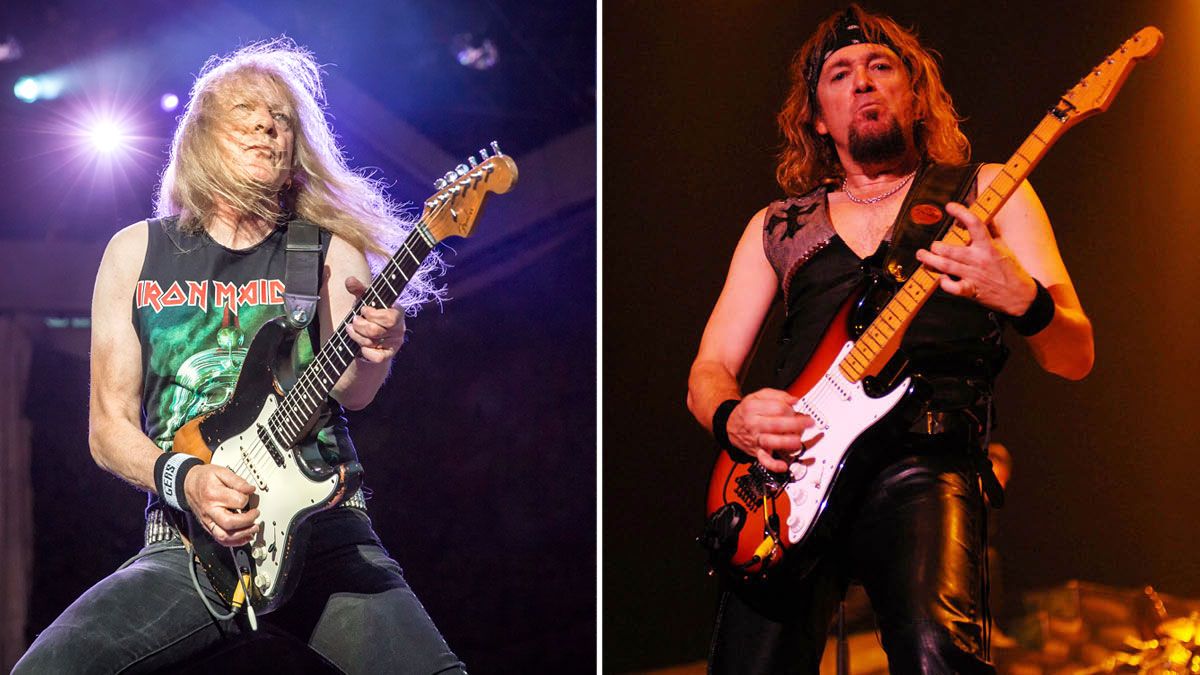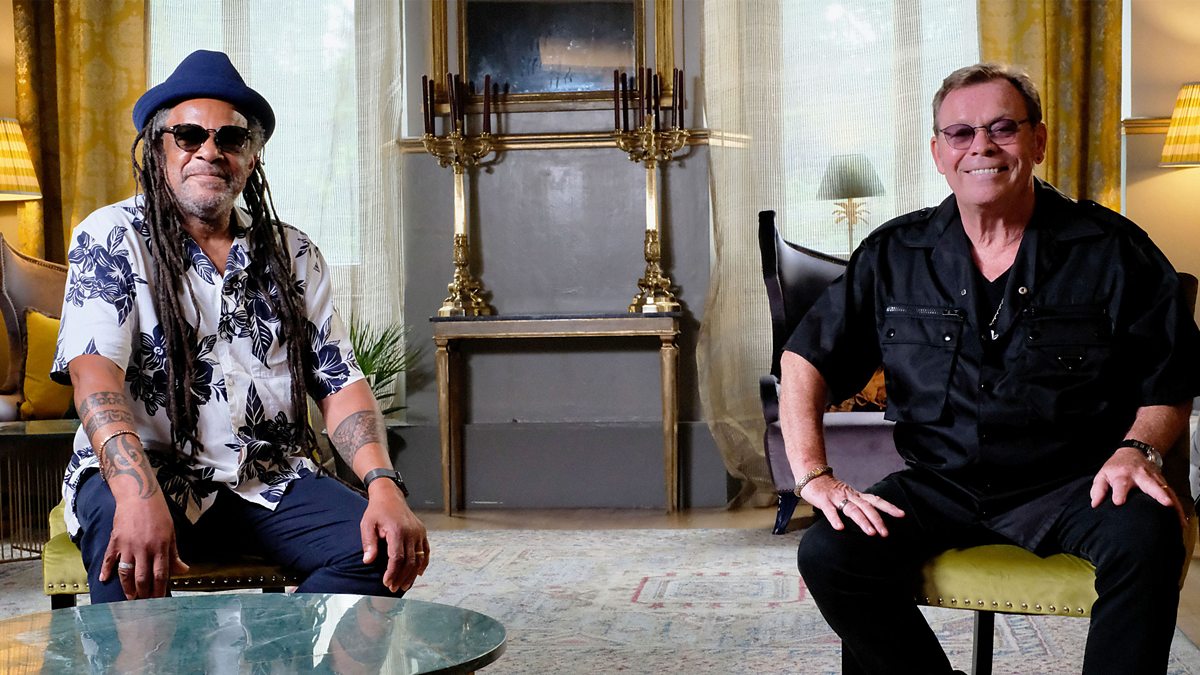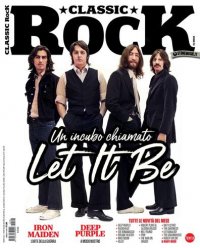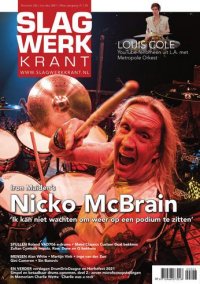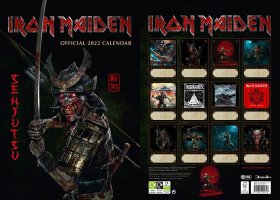1. Senjutsu
A dramatic opener that uses Phrygian ideas to hammer home the album’s Eastern themes
Adrian: “The title track was inspired by Japanese drums. We put my demo up on Pro Tools and Nicko [McBrain, drummer] played along to it. Then we took the digital drums out and added guitars.
“We got the drum and guitar track ready to go first. I had a couple of melodies and because of the Eastern nature of it, Steve [Harris, bassist] suggested a battle scene – an army trying to scale the walls of a city. Full-on drama!”
2. Stratego
One of the more succinct offerings, using the same power chord to minor sixth shifts heard on some of the group’s classic '80s material
Janick: “I wrote a lot of the music for this one and Steve brought his melodies in. It’s a basic rock ’n’ roll track with some extra creativity thrown in.
Adrian: “That power chord to minor sixth shift is very dark-sounding and always very effective. It sets up a mood and away you go! It defines the sound of the song, with that element of discordance to it.”
3. The Writing On The Wall
The lead single that goes from cowboy to Celtic in just 30 seconds
Adrian: “This was one of my songs so I gave myself a nice long solo! It’s always been 16 bars with Maiden – every solo is that length. I’d never done 32, so I thought I’d give myself double this time. And that was actually quite a challenge, trying to build it up into something interesting. So I did the big melodic solo, then Dave plays one too and Janick plays the outro stuff. But we had a lot of trouble with that main simple riff in the D position.
“When three guitars play it, because of intonation, it never sounded right to me. Two guitars sounded right but three sounded a bit off. So Janick tracked the higher one and I played the lower one. And that part almost sounds like a horn line.”
Janick: “There’s definitely a Celtic feel to this one. When we bring songs in, anything goes. Nothing is sacred. That’s what gives this band so much depth. There’s that cowboy feel at the beginning, too. It all goes together really well and still sounds like Iron Maiden.”
4. Lost In A Lost World
An experimental 10-minuter, with some head-turning time shifts and mirrored vocal melodies
Adrian: “Steve has a very different take on things, which for the most part is a real strength – because it makes us sound different to anything else. He’s got a knack for these time changes, and sometimes they’re hard to get your head around, but having worked with him for many years, I can almost anticipate where he’s going to go. I think we all can. That’s the beauty of having a band that have played together all these years.”
Janick: “We’re not scared to head off in different directions in the middle of a song. It doesn’t matter how long the song ends up being – if it feels right, be prepared to go there. As for guitar tracks mirroring the vocals, sometimes we might put them down before Bruce and other times we’ll add them after. It’s different each time. It gives the guitars a higher octave and takes the sound to a different place, adding to the vocal line.”
5. Days Of Future Past
An uptempo, Smith/Dickinson-penned modern metal rager
Adrian: “It’s got quite a modern feel in places and it’s only four minutes, so it’s the shortest track on the record. The riff that comes in at 30 seconds feels very fresh and youthful. It uses the E position on the seventh fret and then you use one finger to play a C bass note, then down to the A.
“It’s almost a Spanish flamenco thing if you play it on acoustic with a bossa nova rhythm, but then you plug into a Marshall and play it differently, it sounds like a rock song! I like that E chord with the movement underneath.”
6. The Time Machine
The sound of Gers and Harris penning their own prog rock opera
Janick: “This is the one with the weird tunings for all the extra colour at the beginning. It was actually all done on the Strat. To be honest, I was going to redo it on acoustic, but the Strat had such a weird sound that the acoustic wouldn’t have gotten.
“I threw everything into the works for this one. We’ve always loved longer, more drawn-out tracks and even though we’re considered heavy metal we can also be folky, edgy, progressive and also very soft in places. In some respects, our way of looking at an album is everything’s possible!
“All you need, really, is a powerful chorus. Then you layer the guitars, it’s our job to make a tapestry underneath that enhances Bruce’s vocals rather than getting in the way. We have a natural way of playing. We don’t work it out much, it’s just there.”
7. Darkest Hour
A brooding neoclassical ballad with some extra depth from Smith’s double neck
Adrian: “For this I used my double-neck Jackson, with a six and a 12. It weighs about three-quarters of a ton! But it sounded really good in the studio, especially for a ballad-y kind of song.”
8. Death Of The Celts
The first of the album’s three Harris-penned closing tracks – with some surprise shifts from minor to major
Adrian: “It’s funny – Steve will have these ideas and then look at me, Dave or Janick. The ideas are usually quite complicated, so sometimes you might see guitarists hiding away behind their amps, waiting for the others to take up the gauntlet and learn these super-complicated parts! But we all do our bit. It takes a lot of concentration to play Steve’s stuff. Honestly, it can be quite a challenge.”
Janick: “We made this album very differently. Normally, we get a studio to rehearse in and then get seven or eight songs ready as a live band first before we record. But this time it was all done in the studio. We went in and actually learned things there, putting them down soon after and then moving on to the next. So it got quite confusing, especially with the longer songs.
“There were so many melodies and riffs floating around in the studio. Songs like
Death Of The Celts were done in parts. Sometimes we’d be playing three-part harmonies together. And there were a lot of tempo changes. Steve would have a riff and melody for us to memorise, then there would be a tempo change, then we’d be back to the melody but a different tempo! It wasn’t an easy album to make.”
9. The Parchment A
A moody mixture of Phrygian and Phrygian Dominant tonalities on arguably the album’s darkest track
Janick: “This one has that Egyptian feel to it. With Maiden, we love the imagery that comes through the music. We can take people places, and that’s the great thing about music and playing guitar. You think about what you’re playing and how you can transport the listener. That’s something magical.”
10. Hell On Earth
A fittingly epic conclusion to the album, with mellowed clean tones before the heavy metal thunder arrives…
Adrian: “On those Marshall JVMs, you’ve got two clean channels and two dirty channels, and each one has three different modes. There are a lot of different tonal options there. With clean sounds, compression is very important – well, compression is important in general for recording because it keeps everything tight and punchy-sounding. Maiden have always been known for putting lighter shades in songs. Dynamics are very important to us.”
Janick: “This is such a thematic end to the album, with so much power. It’s very cinematic and I love how all the guitars interact with each other. It’s heavy but it has so much soul to it. It’s an album we can be proud of. I can’t sit here and tell you this is the best album we’ve ever done. That would be stupid. But I’m very proud of it – as proud as I am of any Maiden album.”


